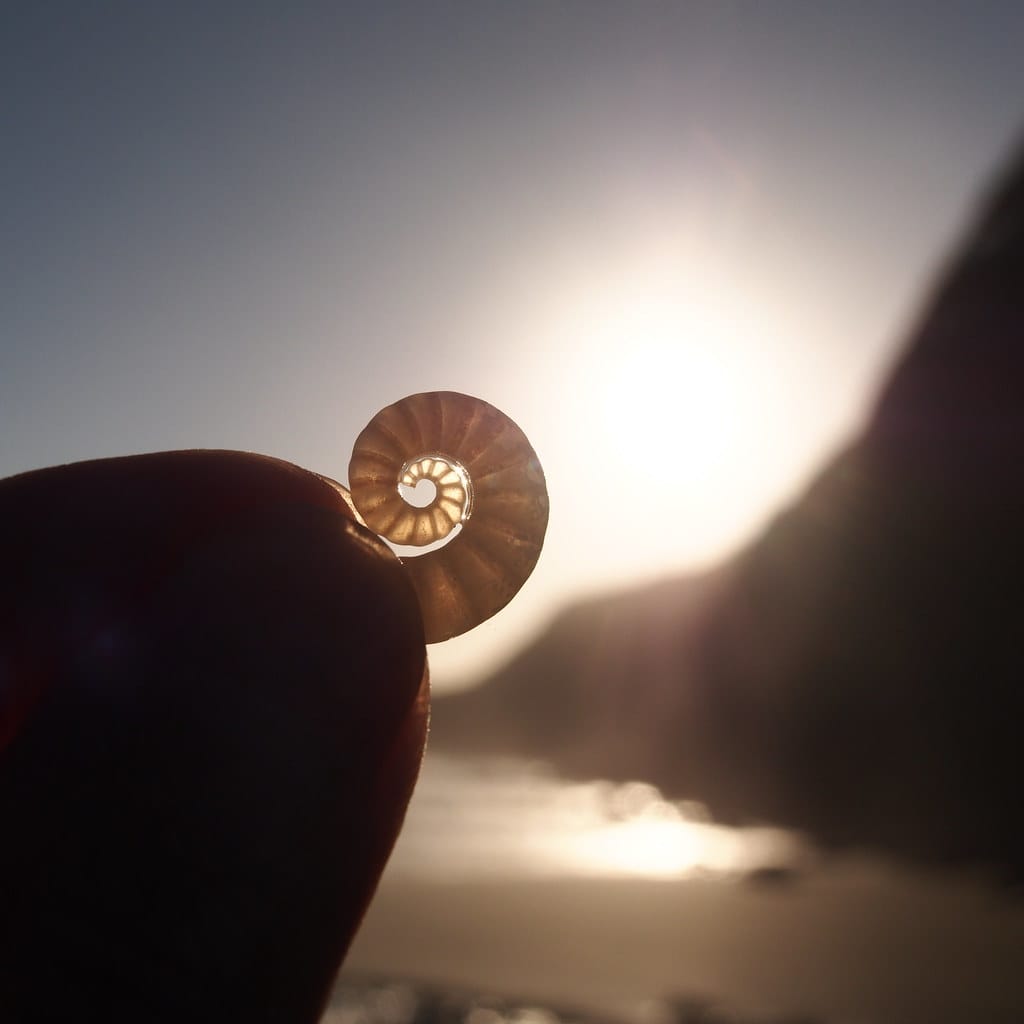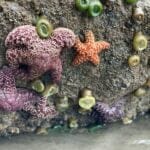Spirula spirula, the sole surviving member of the Spirulidae family, is a deep-sea cephalopod with a captivating story. This enigmatic squid, often called the ram’s horn squid due to its unique internal shell, offers a glimpse into a world hidden beneath the waves. From its shell’s buoyancy secrets to its nightly migrations, Spirula spirula presents a fascinating puzzle that scientists are still piecing together. Let’s delve into the depths and explore the mysteries of this unique cephalopod.
A Shell Unlike Any Other
One of the most remarkable features of Spirula spirula is its internal shell. Unlike the external shells of its molluscan relatives or the cuttlebone of cuttlefish, the ram’s horn squid’s shell resides within its mantle. This isn’t just any shell; it’s a chambered, coiled marvel, resembling a miniature ram’s horn—hence the common name. These chambers are filled with gas, enabling the squid to regulate its buoyancy and navigate the water column with precision. Think of it as a tiny, organic submarine, rising and descending through the twilight zone with effortless grace. When a Spirula spirula dies, this buoyant shell is often released, eventually washing ashore on beaches around the world. This explains the abundance of Spirula shells, even though live sightings remain a rare event.
Illuminating the Depths: Bioluminescence and Vertical Migration
Spirula spirula adds to its mystique with a bioluminescent organ, a photophore, situated at the tip of its body. This organ emits a soft, green glow, which scientists believe serves as a clever camouflage tactic called counter-illumination. In the dimly lit mesopelagic zone, this light likely helps the squid blend in with the faint sunlight filtering from above, masking its silhouette from predators lurking below. This “invisibility cloak” is crucial for survival in a world where being seen can mean becoming dinner.
This bioluminescence is intimately tied to the squid’s daily vertical migration. During the day, it typically inhabits depths of 600-700 meters, potentially reaching 1,000 meters. As night falls, it embarks on an upward journey to shallower waters between 100 and 300 meters. This nightly commute is likely driven by a delicate balance between foraging for food and avoiding becoming food. The shallower waters offer richer feeding opportunities, but they also increase the risk of encountering predators.
A Small Squid with a Big Impact: Diet, Predators, and Ecosystem Role
Despite its small size (35-45 mm long), Spirula spirula plays a significant role in the deep-sea ecosystem, bridging the mesopelagic “twilight zone” with the even deeper bathypelagic “midnight zone.” Although direct observation of their diet is challenging, its diet probably consists of small, deep-sea crustaceans and other planktonic organisms drifting in the currents. In turn, it becomes prey for larger deep-diving fish, other cephalopods, and even whales, demonstrating its crucial link in the deep-sea food web.
Beyond its role as predator and prey, Spirula spirula contributes to the deep-sea environment in other ways. Its empty shells, once buoyant messengers from the depths, can become miniature shelters for other small organisms on the seafloor. Additionally, its waste products contribute to the delicate nutrient cycle in the deep ocean, acting as a fertilizer for microscopic life and influencing the overall health of this unique ecosystem.
Unraveling the Evolutionary Journey: A Living Fossil
Spirula spirula is not just a fascinating creature of the present; it’s a living testament to the power of adaptation and survival. As the sole surviving member of the Spirulidae family, its story stretches back millions of years. Fossil records, particularly those from the Cretaceous period and the lower Miocene of Kaipara Harbour, New Zealand, provide glimpses into the evolutionary history of this ancient lineage. These fossils suggest that the Spirulidae family was once far more diverse, making the continued existence of Spirula spirula even more remarkable. It’s a living fossil, a window into a time when the oceans teemed with now-extinct relatives.
Ongoing Research and Future Discoveries
While we’ve gleaned much about Spirula spirula, many questions still linger. How exactly do its bioluminescence and buoyancy mechanisms work at a molecular level? What are its reproductive strategies? What are the precise details of its deep-sea interactions and life cycle? Ongoing research continues to probe these mysteries, employing advanced technologies to explore the challenging deep-sea environment. As we gain new insights, we’ll undoubtedly develop a deeper appreciation for the intricate life that thrives in the hidden depths of our oceans, including the enigmatic Spirula spirula.
Quick Facts About Spirula spirula
| Feature | Description |
|---|---|
| Scientific Name | Spirula spirula |
| Common Name | Ram’s Horn Squid |
| Shell | Internal, coiled, buoyant; washes ashore frequently |
| Size | 35-45 mm |
| Habitat | Mesopelagic and bathypelagic zones (100 – 1,000m), near oceanic islands and continental slopes, likely influenced by nutrient levels and currents |
| Depth Range | Typically 100-1000 meters (300-3,000 feet), deeper during the day, shallower at night |
| Behavior | Nocturnal, vertical migrator, bioluminescent |
| Diet | Likely small crustaceans, fish, and other planktonic organisms |
| Predators | Larger fish, seabirds, marine mammals, other cephalopods |
| Ecological Significance | Provides habitat for other small organisms, contributes to nutrient cycling |
| Distribution | Tropical and subtropical open ocean waters worldwide |
Taxonomy and Classification
- Kingdom: Animalia
- Phylum: Mollusca
- Class: Cephalopoda
- Order: Spirulida
- Family: Spirulidae
- Genus: Spirula
- Species: Spirula spirula (Linnaeus, 1758)
If you’re interested in a new and exciting vaping experience, check out our sourin products today!












